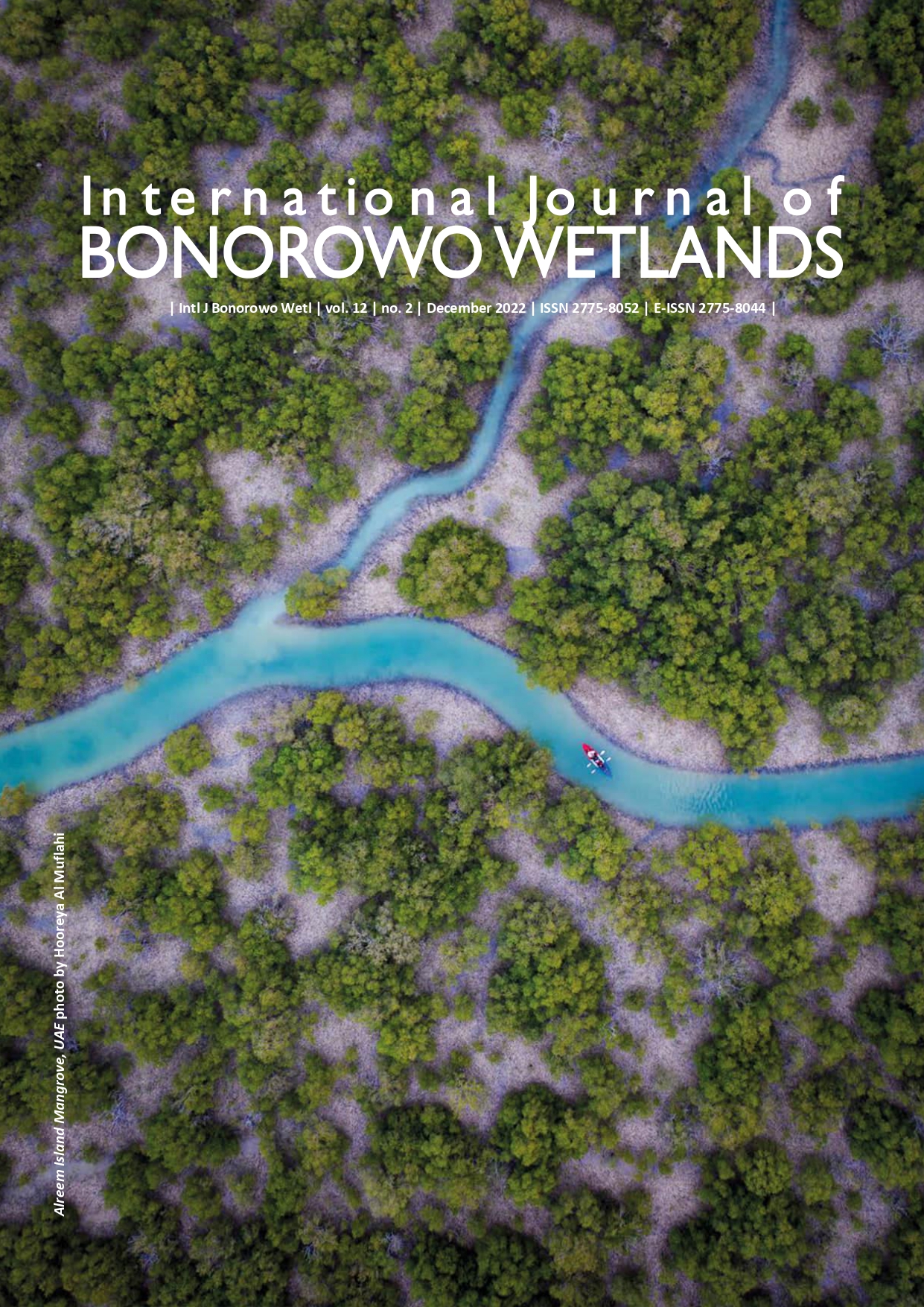Effect of water physicochemistry on amphibian abundance in Sub-tropical Kupinde Lake of the Nepal Himalaya
##plugins.themes.bootstrap3.article.main##
Abstract
Abstract. Sunar CB, Pandey N, Chand B, Upadhyaya LP, Thapa B, Pant RR, Khanal L. 2022. Effect of water physicochemistry on amphibian abundance in Sub-tropical Kupinde Lake of the Nepal Himalaya. Intl J Bonorowo Wetlands 12: 92-99. Amphibians are the key bioindicators of ecosystem health. Their diversity and abundance are affected by the physicochemical factors of the environment. Wetland ecosystems of the Himalaya are under the threat of human activities and current climate change. However, hydrochemical status and faunal diversity are poorly documented in the wetlands of western Nepal. This study characterized the physicochemical parameters of water in Kupinde Lake in the Salyan District of Karnali Province, Nepal, and established the association between amphibian abundance and those parameters. A total of 24 samples of surface water were collected at the lake's edge during October 2021, and 18 physical and chemical parameters were analyzed. Visual encounter surveys were conducted at each water sampling site to count amphibians within a circle of two meters in diameter. The lake water was slightly alkaline (mean pH = 8.16±0.29), and the major dominating cation and anion were Ca2+ and HCO3-, respectively. Amphibian abundance was positively correlated with pH, HCO3-, and NH4+ and negatively correlated with EC, TDS, CO2, Cl-, and Na+. The polynomial regression analysis revealed amphibian abundance has a consistent positive association with water pH (r2 = 0.497, p < 0.05) and unimodal relation with the temperature (r2 = 0.188, p < 0.05). Low amphibian diversity and dominance of a single amphibian species, the Indian skipper frog (Euphlyctis cyanophlyctis Schneider, 1799), indicate poor ecosystem health of the lake. The findings of this study provide baseline information for monitoring and managing the Kupinde Lake.

